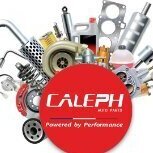-
Welcome to Auto Parts Forum
Whether you are a veteran automotive parts guru or just someone looking for some quick auto parts advice, register today and start a new topic in our forum. Registration is free and you can even sign up with social network platforms such as Facebook, X, and LinkedIn.
Low Gas Prices + Simple Car Care = More Savings
-
Similar Topics
-
By Counterman
link hidden, please login to view announced 10 new part numbers that cover over 3,145,000 applications and model years 2014-2024. Anchor said the below part numbers, which are in stock and available for immediate delivery, “represent excellent sales opportunities.” For more details on Anchor’s complete program availability, contact your local sales representative or call Anchor’s customer service department direct at 1-888-444-4616.
Anchor Industries will be exhibiting at AAPEX 2024, at booth A4434.
The post
link hidden, please login to view appeared first on link hidden, please login to view.
link hidden, please login to view -
By CALEPH Auto Parts
Steps to clean your car's air filter:
1. Find the location of the air filter: It is usually located in the engine compartment, near the side of the engine.
2. Make sure the engine is cool: Before checking or cleaning the air filter, make sure the engine has cooled down completely to avoid burns.
3. Open the hood: Find and open the hood so that you can access the air filter.
3. Locate the air filter box: The air filter is usually located in a black plastic or metal box.
4. Remove the air filter box: Unscrew or unfasten the screws or clips that secure the air filter box.
5. Remove the old filter: Remove the old air filter from the box, being careful not to damage the filter box.
6. Check the condition of the filter: If there is only a small amount of dust on the filter, you can clean it. If the filter is already very dirty or damaged, it is recommended to replace it.
7. Clean the filter: If you decide to clean the filter, you can blow it from the inside out with compressed air to remove dust. Do not use water or liquid cleaners as they may damage the filter.
8. Check the integrity of the filter: After cleaning, check the filter for tears or holes that may affect its performance.
9. Reinstall the filter: If the filter is in good condition, put it back into the filter box and make sure it is properly seated.
10. Reinstall the filter box: Replace the filter box cover, making sure all screws and clips are secure.
11. Close the hood: After cleaning or replacing, close the hood.
Click the link to learn more:
link hidden, please login to view 
-
By CALEPH Auto Parts
The car air filter is a vital component in the car engine intake system. Its function is to filter out dust, sand and other impurities in the air entering the engine to reduce the wear of these impurities on the internal parts of the engine and protect the normal operation of the engine. The performance of the air filter is directly related to the life of the engine and the fuel efficiency of the car.
There are two main types of air filters: dry and wet. Dry filters usually consist of paper filter elements, while wet filters may include oil bath filters, in which air passes through oil to filter impurities. In modern cars, dry paper filter elements are widely used because of their high efficiency and low cost.
The recommended cycle for maintaining and replacing air filters is usually 10,000 to 20,000 kilometers, but this may vary depending on the vehicle's use environment and driving conditions. In areas with poor air quality or dusty areas, more frequent replacement may be required. If the air filter is too dirty, it may cause insufficient engine intake, reduced power, increased fuel consumption, and even increased engine wear.
The process of replacing the air filter is relatively simple and mainly includes the following steps:
1. Turn off the engine and open the car hood.
2. Find the location of the air filter, which is usually on the side of the engine compartment.
3. Loosen the clamp or screw that fixes the air filter box.
4. Remove the old filter element and check whether it is damaged or excessively dirty.
5. Clean the inside of the air filter housing to remove dust and impurities.
6. Install the new air filter element and make sure it is properly placed.
7. Reinstall the air filter box and fix it.
In daily maintenance, compressed air can be used to blow dust from the inside of the filter element to the outside, but oil or water should be avoided for cleaning, as this may damage the filter element. If the filter element is already damaged or excessively dirty, a new filter element should be replaced.
Proper maintenance and timely replacement of air filters are essential to maintaining engine performance and extending its service life. Car owners should determine the best time to replace the air filter based on the recommendations of the car manufacturer and their own driving environment.
🔗Here are more products you want: link hidden, please login to view
💬Leave a message to tell us your needs, our professional team is always at your service!
-




Recommended Posts
Join the conversation
You can post now and register later. If you have an account, sign in now to post with your account.
Note: Your post will require moderator approval before it will be visible.